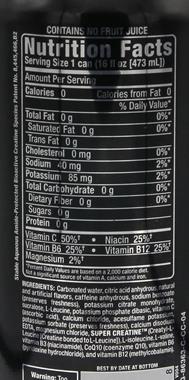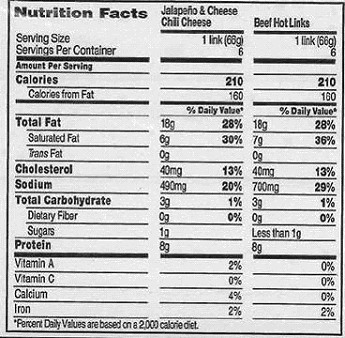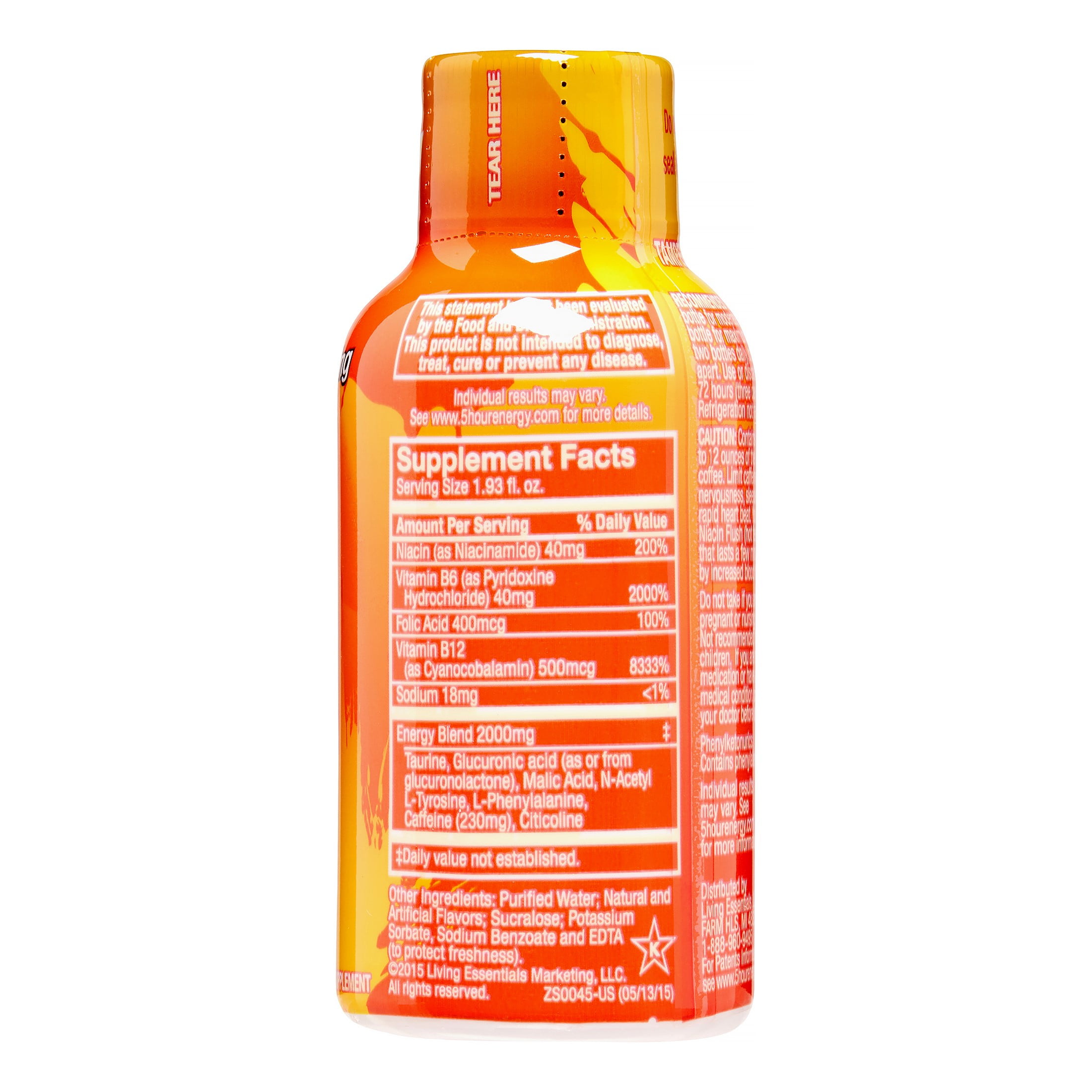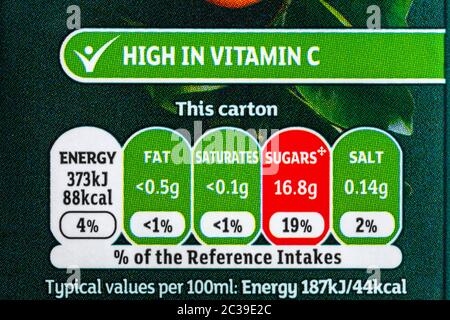38 nutrition labels list the energy content of food in
Codex Guidelines on Nutrition Labelling 3.4.2 Information on energy value should be expressed in kJ and kcal per 100 g or per 100 ml or per package if the package contains only a single portion. In addition, this information may be given per serving as quantified on the label or per portion provided that the number of portions contained in the package is stated. SELF Nutrition Data | Food Facts, Information & Calorie Calculator The Caloric Ratio Pyramid™ The Caloric Ratio Pyramid appears in every ND analysis, and also on ND's Total Consumption report. This symbol lets you see at a glance how the Calories in the food are distributed, and can help you determine if the food aligns with common macronutrient-based diet plans, such as low-carb (e.g Atkins™ or South Beach™), low-fat, high-protein, or …
Nutrition Labels Flashcards | Quizlet Nutrition Label Required on most packaged food in many countries Calories The amount of energy a food has. Total Fat The total amount of Saturated, unsaturated, and trans in each serving. Serving Size The amount you should eat for one serving. Servings per container The amount of servings in the food item. Percent of Daily Value

Nutrition labels list the energy content of food in
How to calculate the Energy available from foods To calculate the energy available from a food, multiply the number of grams of carbohydrate, protein, and fat by 4,4, and 9, respectively. Then add the results together. For example, 1 slice of bread with a tablespoon of peanut butter on it contains 16 grams carbohydrate, 7 grams protein, and 9 grams fat : 16g carbohydrate x 4 kcal/g = 64 kca l Food labels & nutritional information | Raising Children Network All foods have to list seven food components on their nutritional information panels - energy (kilojoules), protein, total fat, saturated fat, total carbohydrates, sugars and sodium. Manufacturers might decide to include other nutrients too, including fibre and calcium. List of food labeling regulations - Wikipedia "The green dot symbol" (Vegetarian mark), Indian requirement for food, available worldwide "V-Label" by the European Vegetarian Union , Swiss trademark for vegan and vegetarian items (specified by product), available worldwide [4] [5]
Nutrition labels list the energy content of food in. How to Understand and Use the Nutrition Facts Label | FDA 25.2.2022 · Overview. The information in the main or top section (see #1-4) of the sample nutrition label (below) can vary with each food and beverage product; it … Food Labels | Nutrition.gov What's New with the Nutrition Facts Label. HHS, Food and Drug Administration. The U.S. Food and Drug Administration (FDA) has updated the Nutrition Facts label on packaged foods and beverages with a fresh design that will make it easier for you to make informed food choices that contribute to lifelong healthy eating habits. What's in a Name? How Do You Know Your Food's Nutrition Facts Label Is Accurate? It depends on the food matrix and the nutrient, but in general NIST's measurements are accurate to within 2% to 5% for nutrient elements (such as sodium, calcium and potassium), macronutrients (fats, proteins and carbohydrates), amino acids and fatty acids. Nutrient food labels Flashcards | Quizlet Start studying Nutrient food labels. Learn vocabulary, terms, and more with flashcards, games, and other study tools. Home Browse. ... •Total food energy; food energy from fat •Total fat; saturated fat; trans fat; cholesterol ... Nutrition 2.1 Food Labels. 42 terms. Diana_Lopez0920. health claims and food labels. 50 terms. sydneyfinder.
Understanding food labels: portions, energy - Health24 However, many manufacturers still list the energy content of foods in calories (cal) or use both kJ and calories. Confusion arises when the label expresses the energy content in kcal (or kilo-calories). Energy contained in food is always expressed in kcal, but most manufacturers forget to use the 'k' in front of the 'cal' in the abbreviation. Call for authors - Scoping review on menu labelling and portion size ... BackgroundThe WHO Department of Nutrition and Food Safety (NFS) has initiated work on the development of guidance on menu labelling and portion size control, which aims to enhance healthier decisions in the out of home food environment and to address increasing concerns of consuming out of home meals and foods. During the last few years in particular due to the COVID-19 pandemic, the out of ... Nutrition Labels 101: What's Required? What's Optional? Total carbohydrates is a required listing unless there is less than 1 gram, at which point it can be expressed as "contains less than 1 gram," or if less than 0.5 grams per serving, it can be expressed as zero. Sugars are the sneaky nutrient found naturally in many "healthy" foods, including fruit and milk. Nutrition Facts Label Nutrition Facts Label. minus. Table of Contents. Page last reviewed: June 26, 2019. Content source: Division of Population Health, National Center for Chronic Disease Prevention and Health Promotion.
What are Nutrient Content Claims on food labels ... - Nutritionist Pro™ Nutrient Content Claims on Food Panels List energy, fat, carbohydrates, protein, and sodium. The nutritional information panels are a better guide than advertising. If the product contains food-inducing allergens, the label must say so. Some of the healthiest foods don't have labels, including fresh fruit and vegetables, and fish. Food energy - Wikipedia Many governments require food manufacturers to label the energy content of their products, to help consumers control their energy intake. To facilitate evaluation by consumers, food energy values (and other nutritional properties) in package labels or tables are often quoted for convenient amounts of the food, rather than per gram or kilogram; such as in "calories per … Nutrition information panels - Food Standards Protein, fat, carbohydrate, dietary fibre and alcohol all provide energy (kilojoules). Protein Protein is essential for good health and is particularly important for children. Generally, people in developed countries eat enough protein to meet their requirements. Meat, poultry, fish, eggs, milk and cheese are animal sources of protein. How to read food labels | healthdirect information for people with food allergies; a list of food additives; directions for use and storage; the country where the food was produced; Understanding nutrition claims. Some labels tell you what percentage of the recommended daily intake is provided by 1 serve of the product. This helps you to work out how the food fits into a balanced diet.
How to understand food labels - Eat For Health The Nutrition Information Panel on a food label offers the simplest and easiest way to choose foods with less saturated fat, salt (sodium), added sugars and kilojoules, and more fibre. It can also be used to decide how large one serve of a food group choice or discretionary food would be and whether it's worth the kilojoules.
310 Nutrition | Diet, Weight Loss, and Meal Replacement Shakes Stories of Success! Heather A. Fought Through Her Weight Loss Plateau & Has More Energy Than Ever! †. "310 helped me streamline my meals so I can focus on other things, without any worries! When I started my journey with 310, I was 188lbs, now I only weigh 162…. Actually dipping under my goal weight of 165!". -Heather A.
Understanding Food Labels | The Nutrition Source | Harvard … Under the Food Allergen Labeling and Consumer Protection Act of 2004, eight major food allergens—milk, fish, tree nuts, peanuts, shellfish, wheat, eggs, and soybeans—are required to be listed in a “contains” statement near the Ingredients list if present in a food. An example would be “contains wheat, milk, and soy.”
Energy in Food and Nutrition | Chemistry for Non-Majors | | Course Hero Energy from Protein: 5 g x 4 kcal/g = 20 kcal = 20 Cal. Convert to kJ. 20 Cal x 4.184kJ/Cal = 83.68 kJ = 84 kJ. Step 3: Think about your result . For the snack food in this example, most of the energy is coming from fat first, then from carbohydrates and finally from protein when these three sources of energy are considered.
Food Labels: Carbohydrates | Home & Garden Information Center The 2015 Dietary Guidelines for Americans makes the following recommendations about daily consumption of unrefined carbohydrate foods, based on a 2,000-calorie diet: Choose fiber-rich fruits, vegetables, and whole grains often. 6 ounces of grain products, with at least half of this amount being whole grain products 2 ½ cups vegetables
Understanding Food Labels | The Nutrition Source | Harvard T.H. Chan ... Under the Food Allergen Labeling and Consumer Protection Act of 2004, eight major food allergens—milk, fish, tree nuts, peanuts, shellfish, wheat, eggs, and soybeans—are required to be listed in a "contains" statement near the Ingredients list if present in a food. An example would be "contains wheat, milk, and soy."
Food labels: a guide to reading nutrition labels - MyDr.com.au A food making a 'diet' claim must meet some criteria regarding the content of nutrients of public health significance (saturated fat, sugars and sodium) and must either have no more than 80 kJ/100 mL (for liquid foods) or 160 kJ/100 g (for solid foods) or must have at least 40% fewer kilojoules than the same quantity of a reference food.
human nutrition | Importance, Essential Nutrients, Food Groups, … human nutrition, process by which substances in food are transformed into body tissues and provide energy for the full range of physical and mental activities that make up human life. The study of human nutrition is interdisciplinary in character, involving not only physiology, biochemistry, and molecular biology but also fields such as psychology and anthropology, …





Post a Comment for "38 nutrition labels list the energy content of food in"